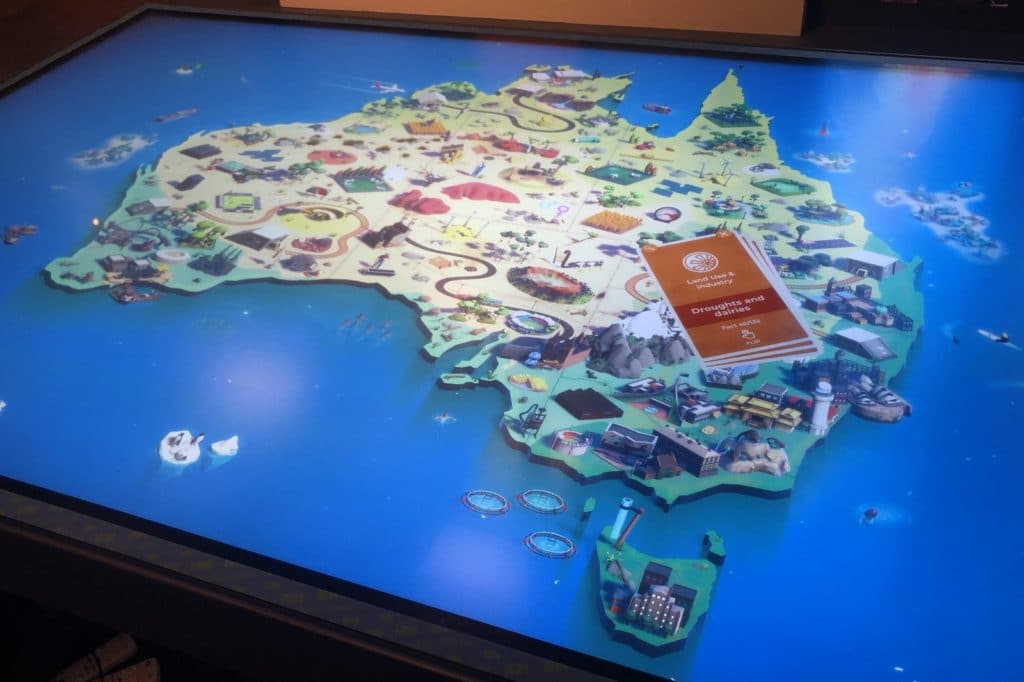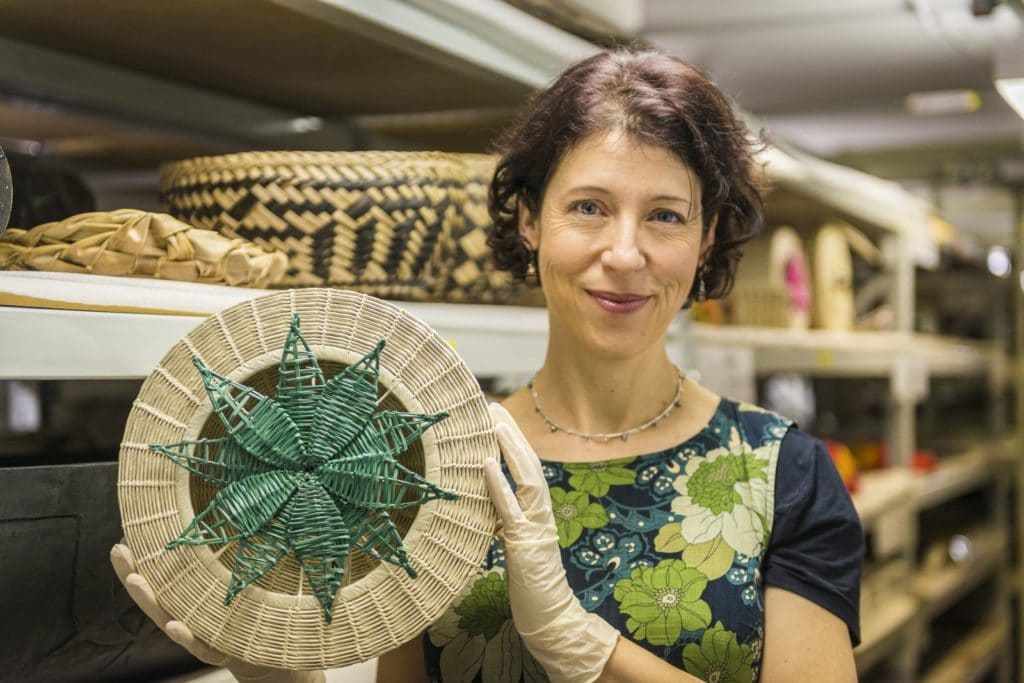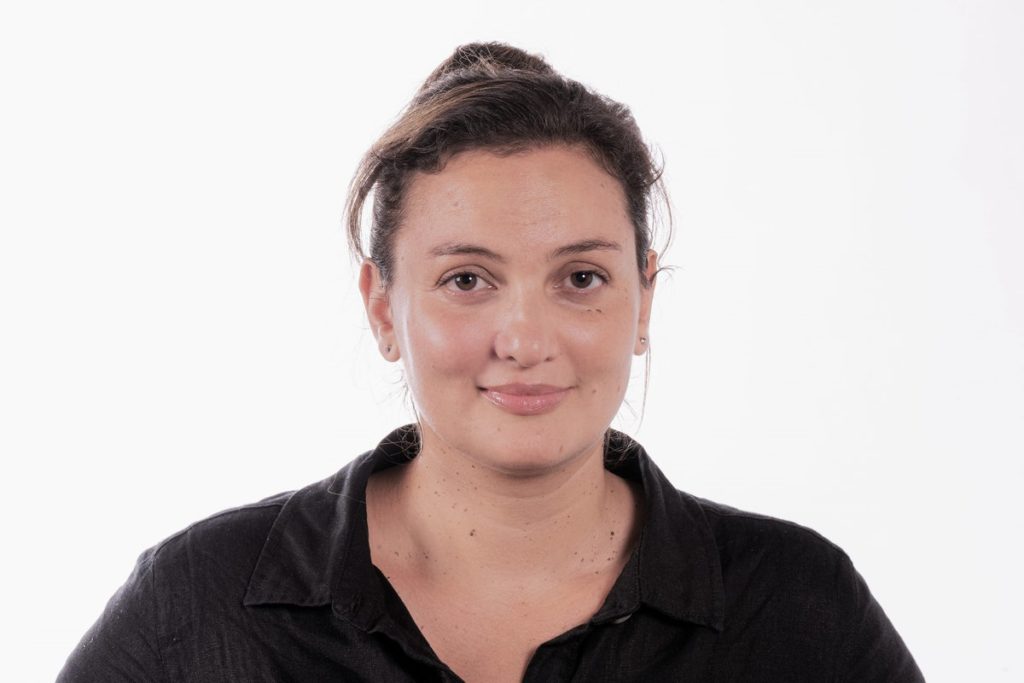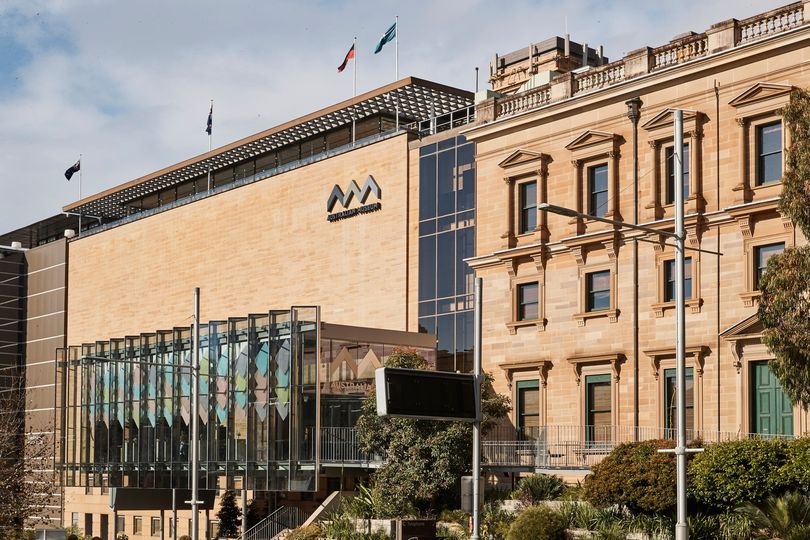Australia (Sydney)
Reopened in November 2020 after a major renovation, Sydney’s Australian Museum brings a focus on climate solutions and First Nations knowledge to the heart of its collections, programming and community work.
“Our generation has this amazing capacity to make a huge change to the planet we live on and the kind of society we can create.” Dr Jenny Newell, Australian Museum
Despite the scale and severity of the climate crisis, the Australian Museum’s Dr Jenny Newell (Manager, Climate Change Projects) and Zehra Ahmed (Sustainability and Access Projects Coordinator) are encouragingly excited. Although discussion about climate change in Australia can be fraught, the work that Jenny and Zehra lead at the museum is championed by Director and CEO Kim McKay AO and widely supported by staff who are passionate about tackling the issue.
“The conversation needs to change,” says Jenny, “but it’s been held back by our media. As a trusted institution for non-political information about the environment and about our cultures, the Australian Museum is in a great position to put out strong messaging around climate change.”
The museum’s newest climate venture tackles the balance between informing and creating spaces for imagination: showing what can be done in terms of carbon reduction, drawdown, building stronger communities, First Nations environmental stewardship and regenerating natural systems. By exhibiting real and exciting solutions, the aim is to stimulate audiences to imagine themselves in a world that they can create.

Surviving Australia exhibition | Photo: Megan Lawrence
“We’ve got this window to create huge change around the world working together,” says Jenny, “so we want to offer reflective spaces within our exhibitions and online to help people to think through their own role in relationship to climate solutions. We are focused on encouraging action and giving people the tools to find out for themselves what changes they might be able to make in their own lives.”
There is also organisation-wide determination to make sure that what is said to the public is backed up by what is done within the building. That means that in addition to the programming focus, there’s been pioneering progress in reducing the institution’s carbon footprint.
Zehra’s leadership of the Sustainability Action Plan resulted in the Australian Museum becoming Carbon Neutral – and the country’s first natural history museum to receive Climate Active certification. This involved working with the building’s natural sandstone structures to redesign heating, lighting, air conditioning and waste management systems. She’s clear that sustainability is no add-on to the work of the museum, but fundamental to its mission: “Museums are intrinsic to talking about sustainability,” she explains “because we hold this incredible body of collections that are so exquisite and beautiful for the future. Looking at the past, we can try to muddle through this terrible challenge in front of us.”
Zehra’s ambition doesn’t stop with being carbon neutral: the aspiration is to become carbon positive. “It’s not enough just to reduce emissions, it’s about drawdown, innovation and the energy that comes from creating a space for people to imagine better futures.”
Much of the planned work to stimulate imaginations reflects the movement of museums beyond physical buildings. A digital climate hub in development will help people to connect to others, share material and find helpful resources.
Storytelling is key – bringing to life, for example, the efforts of the town of Yackandandah to go 100% renewable by 2030, or the story of Jo Lane, a marine biologist and council worker in a small coastal town who is now setting up a seaweed farm. By showcasing how people create change locally, the Australian Museum hopes to inspire others to action.
The Australian Museum’s climate focus guides work with the collections as well. Objects are forceful triggers for stories about the past and the relationship between culture and biodiversity. “The strapline for our forthcoming Climate Solutions Centre is ‘powerful stories for positive futures’,” adds Jenny, “and I’m looking forward to designing object-centric workshops for eliciting stories from communities about environmental change and the future they want to create.” The museum’s exhibitions about climate change: the permanent display ‘Changing Climate’, upcoming temporary and touring displays on climate solutions, and online photography exhibition ‘Capturing Climate Change’ all bring objects and invitations to participate to the service of opening up safe spaces for conversation and deepening engagement in the climate crisis. The museum’s climate work has a focus on solutions. The idea is helping people see how much there is already being done to address the climate crisis, across all parts of society, and that they have the power to advance those solutions. This is the driver for the temporary exhibition opening in the museum’s main hall in June: ‘Spark: Australian innovations tackling climate change.’

Dr Jenny Newell
Although the museum’s recent move to free admission has brought a wider range of the population into the museum, there is work ahead to connect with ‘cautious’ and ‘disengaged’ audiences (as described by researchers’ segmentation of the Australian climate audience).
“We are great at meeting the ‘concerned’ and ‘alarmed’ audience segments,” Jenny tells us, “but we need to help everyone to see that what’s going on in the environment around them is relevant and will impact the people and places they care about.”
This has spurred the museum on beyond the digital sphere. A programme to engage directly with local communities is in development, working with schools and community groups in rural and regional areas.
Jenny explains: “We’ll go to towns and ask people about the environmental changes they are noticing in their area and how they’re responding.”
School groups and others will work with residents to document local viewpoints and stories of resilience and innovation, which can then be shared through museum channels and local media. “We expect this to help people to reflect on what they want for future generations and how to get there,” adds Jenny.

Sydney Elders exhibition | Photo: Stuart Humphreys
Advancing First Nations knowledge is a core strategic priority, and environmental stewardship and First Nation approaches to caring for Country sit at the heart of the museum’s work. The recently-announced appointment of Laura McBride as Director, First Nations, to the executive leadership team will revolutionise further how the climate and First Nations work align.
Again, what’s presented to the public matches what happens behind the scenes. Zehra explains: “When we talk about sustainable procurement, we link that to cultural sustainability. Supply Nation, where you purchase through businesses run or owned by Indigenous peoples, is a significant part of our procurement plan.”
Jenny and Zehra navigate between the urgency of the crisis and the pace of the cultural sector: “My superpower is selective deafness,” says Zehra, “because although I get told ‘no’ a lot, I hear ‘yes’. I just take whoever is with me and run with it as quickly as possible.”

Zehra Ahmed
The need for speed motivates Jenny too: “I’ve got this responsibility,” she explains “to help extend understanding about the need to better care for our country and each other, now. Time is running out.”
Collaboration is key: whether working with Climate Outreach in the UK on effective climate communications or with other cultural institutions focused on advancing climate action, such as the Climate Museum in New York, the Carnegie Museum of Natural History, Pittsburgh, Natural History Museum, London, and the Jockey Club Museum of Climate Change in Hong Kong. Jenny also facilitates collaboration as the founder of the worldwide community of interest, Museum & Climate Change Network.
Artists are vital contributors to the Australia Museum’s work as well: “It’s great collaborating with artists around the Pacific and in Australia,” says Jenny. “They bring a powerful new way of presenting really powerful perspectives on climate change.”
Jenny remains encouraged by progress around the world such as the achievements of Miranda Massie at the Climate Museum or Henry McGhie’s ‘Curating Tomorrow’ work. “It’s a lot more positive than when I started working in climate change in museums about a decade ago – now it feels like a groundswell.”
And Zehra isn’t slowing down any time soon: “I’m genuinely excited about our next three year plan: it includes really cool things like a total ban on plastic, reducing waste diversion, encouraging closed loop systems so that no materials go to landfill, a switch to electric vehicles and building sustainable exhibitions.”
The challenges may be mighty, but with the commitment, excitement – and imagination – of institutions such as the Australia Museum and their audiences, there is also hope.
AtlasAction: Check out the Changing Climate display, take part in one of the citizen science projects or support the museum’s work by becoming a Member.
Project leader
Dr Jenny Newell, Manager Climate Change Projects and Zehra Ahmed, Sustainability & Access Projects Coordinator
Partners
This project has been selected as part of CultureFutures, a storytelling project that maps creative and cultural projects with a social mission – and the artists, collectives and entrepreneurs behind them. Atlas of the Future is excited to join forces with Goldsmiths Institute of Creative and Cultural Entrepreneurship and the British Council Creative Economy.
Support the Atlas
We want the Atlas of the Future media platform and our event to be available to everybody, everywhere for free – always. Fancy helping us spread stories of hope and optimism to create a better tomorrow? For those able, we'd be grateful for any donation.
- Please support the Atlas here
- Thank you!



